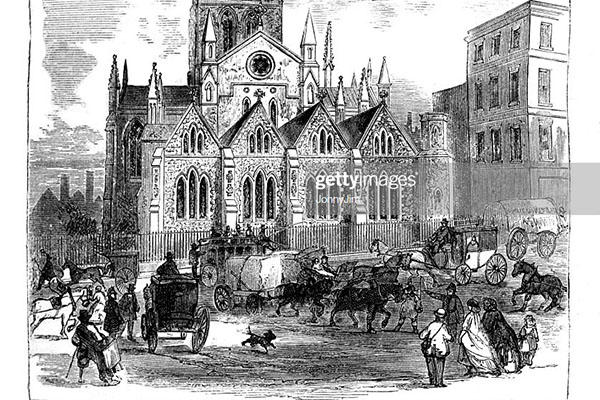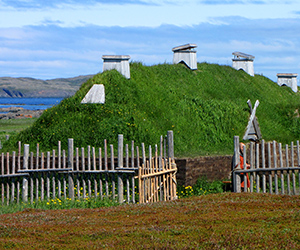CANADA HISTORY
The London Conference

In the spring of 1865, the Canadian delegation embarked on a crucial mission to Britain to obtain approval for their plan of Canadian Confederation. This journey marked the final stages of an effort that had taken years of negotiation, debate, and political maneuvering across the British North American colonies. The delegation, led by John A. Macdonald, sought to solidify an agreement that would unite the colonies into a single, self-governing federation while maintaining strong ties to the British Crown. However, the road to Confederation was not a straightforward one, and the London Conference of 1866 would play a critical role in shaping the final form of the Dominion of Canada.
Before the delegation reached London, the battle for Confederation had already been fought on Canadian soil. The Union of the Canadas, comprising Canada East (Quebec) and Canada West (Ontario), had been grappling with deep political gridlock. The existing system, which gave equal representation to both regions, had become untenable as Canada West's population outgrew that of Canada East. John A. Macdonald and his colleagues recognized that a broader federation could break the political deadlock, allowing for more stable governance and economic growth. However, they faced significant opposition, particularly from French Canadian politicians, who feared that Confederation was a thinly veiled attempt to submerge their language, culture, and Catholic religion in a sea of English dominance.
The concerns of French Canadians were not unfounded. Many feared that the creation of a larger, predominantly English-speaking federation would lead to their marginalization. With Canada West growing rapidly, many in Canada East believed that the balance of power would inevitably tip in favor of the English population, leaving French Canadians vulnerable to assimilation or cultural erasure. The debates in the Legislative Assembly of the Union of the Canadas were fierce, and the decision to join Confederation was not an easy one for many French Canadian leaders.
The counter-argument, however, proved persuasive enough to win the day. Supporters of Confederation argued that the provincial system envisioned in the new federal structure would actually provide French Canadians with more control over their own affairs. By devolving certain powers—such as control over education, language rights, and civil law—to the provinces, French Canadians could safeguard their culture and traditions in Quebec while participating in the larger federal union. This compromise ultimately helped to secure the support of some French Canadian politicians, though it would remain a contentious issue for years to come.
By December 1866, with the internal debates largely settled, the London Conference convened in Britain to finalize the terms of Confederation. This gathering was the third and final conference following the Charlottetown and Quebec Conferences, where the framework for Confederation had been laid out. The goal of the London Conference was to resolve any remaining issues and to draft the final legislation that would create the new nation. Under the careful leadership of John A. Macdonald, the Canadian delegation worked diligently to address lingering concerns, particularly those regarding provincial powers and the balance of authority between the federal and provincial governments.
The British government, led by Lord Derby, had its own reasons for supporting the union of the colonies. The British Empire had long viewed British North America as strategically important, but costly and difficult to manage from across the Atlantic. The recently concluded American Civil War added another layer of urgency to the proceedings. The war had left the United States with the largest and most battle-hardened standing army in the world, and there were widespread fears that the U.S. might turn its sights on the British colonies to the north, seeking revenge for Britain's perceived support of the Confederacy during the war. British leaders believed that a united and self-governing Canada would be better positioned to defend itself and less likely to provoke American aggression than a collection of small, fragmented colonies. Thus, British officials were eager to see the Confederation move forward as a means of stabilizing North America and reducing Britain's own military and financial obligations.
The London Conference proceeded smoothly, largely due to the groundwork laid by earlier meetings and the leadership of Macdonald. One of the final debates concerned the name of the new country. John A. Macdonald had originally envisioned the new nation as the "Kingdom of Canada," a name that would emphasize the country's ties to the British monarchy. However, British officials, wary of provoking the United States, insisted on a more neutral term. The fear was that "kingdom" might antagonize the Americans, who had fought their War of Independence against a monarchy. As a result, the name was changed to the Dominion of Canada, a compromise that still reflected Canada's status as a self-governing entity within the British Empire while avoiding the more politically charged term "kingdom."
Another key issue resolved at the London Conference was the structure of the new federal government. The British North America Act, which emerged from the conference, established a bicameral Parliament with an elected House of Commons and an appointed Senate. It also outlined the division of powers between the federal government and the provinces, ensuring that provinces would retain control over issues such as education, language, and civil law, areas that were of particular importance to Quebec. This federal structure allowed for a balance between unity and regional autonomy, a crucial factor in gaining the support of all the provinces.
In March 1867, the British North America Act was passed by the British Parliament with little opposition. The Act formalized the union of Canada East, Canada West, Nova Scotia, and New Brunswick into the new Dominion of Canada, effective on July 1, 1867. This date, now known as Canada Day, marked the official birth of a new nation, a union forged through compromise, diplomacy, and the shared vision of a federal state that would stretch from the Atlantic to the Pacific.
The significance of the London Conference and the events that led to Confederation cannot be overstated in Canadian history. The creation of the Dominion of Canada was a bold and unprecedented step towards nationhood, one that reflected both the unique challenges and opportunities of the time. Confederation allowed Canada to emerge as a unified country with the ability to manage its own affairs, defend its borders, and grow into a strong, independent nation while maintaining its ties to Britain.
Furthermore, the success of the London Conference laid the foundation for the gradual expansion of Canada. Over time, other provinces and territories would join the Dominion, eventually creating the vast and diverse country that we know today. The federal structure established at Confederation has proven remarkably resilient, allowing Canada to navigate the challenges of regionalism, language, and cultural diversity while fostering a sense of national unity.
In conclusion, the London Conference of 1866 was a critical moment in the creation of Canada. It marked the culmination of years of debate and negotiation, both within Canada and with Britain. The passage of the British North America Act in 1867 was the birth of a new nation, one that would grow and evolve over the coming centuries into the vibrant, multicultural country we know today. Confederation was not simply the joining of a few colonies; it was the beginning of the Canadian experiment in federalism, democracy, and the peaceful coexistence of diverse cultures and regions within a single political framework.
Cite Article : www.canadahistory.com/sections/documents




